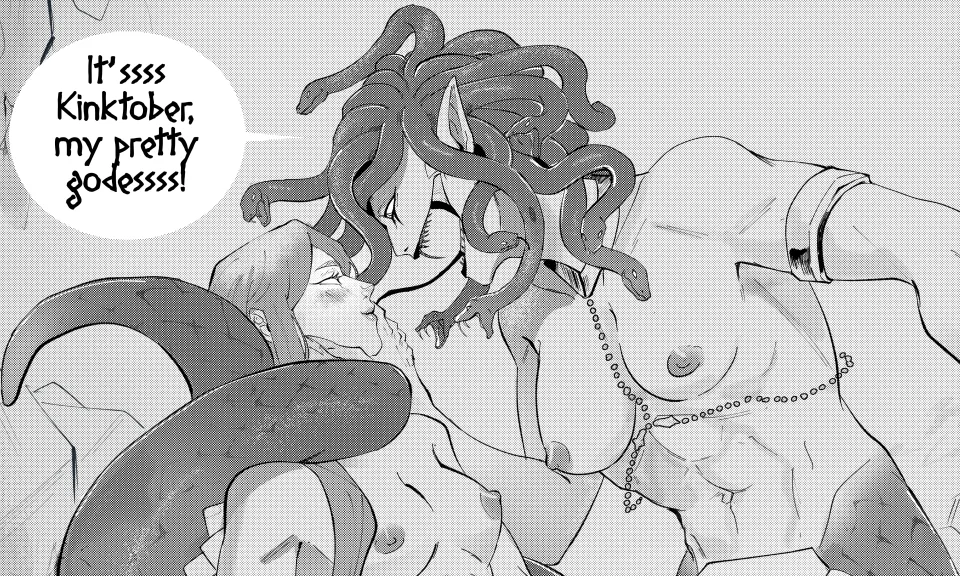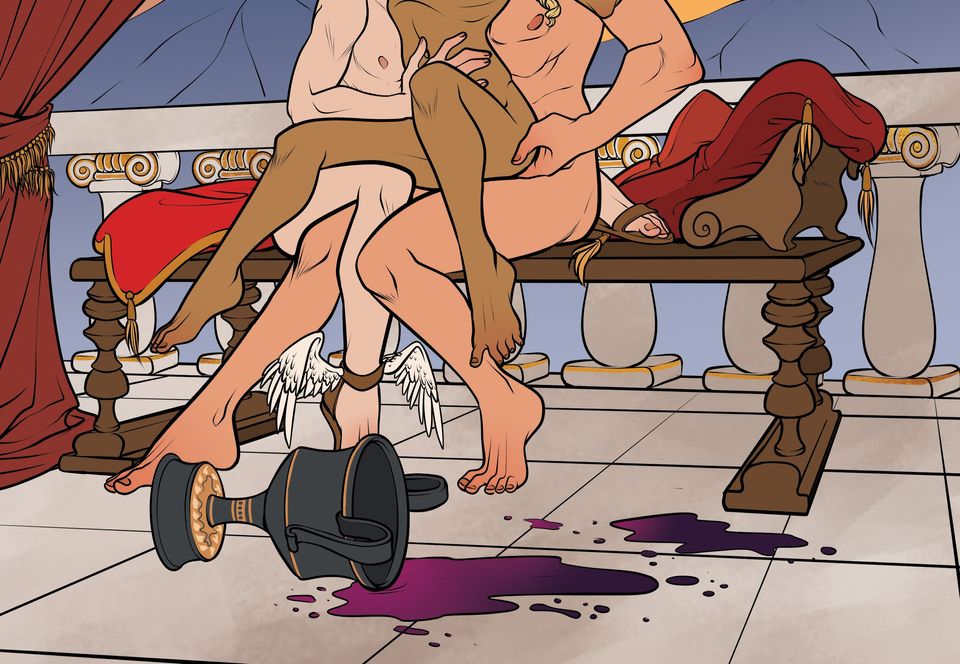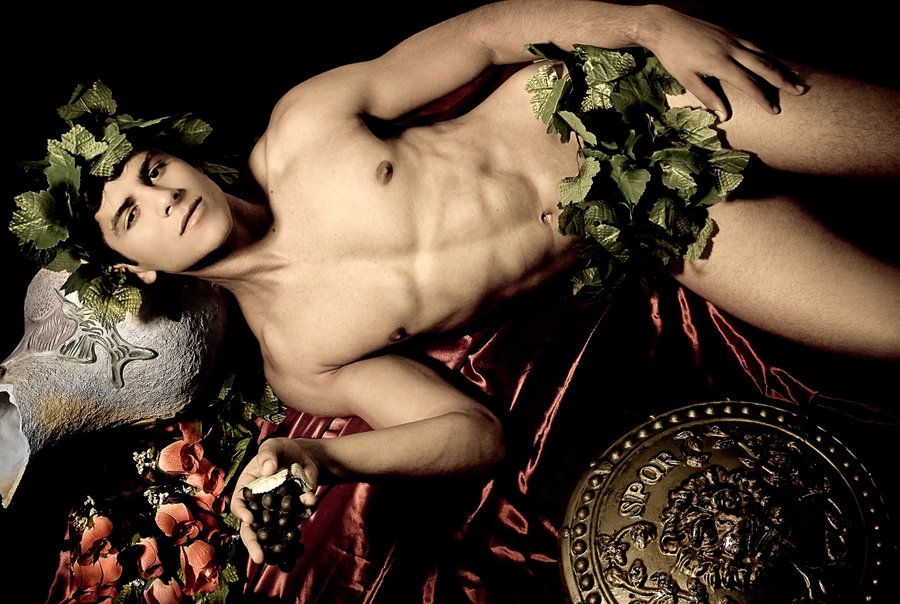Fiction: Stables Enough (Hermes / Freyr)
Hello my lovelies,
I apologise, I completely dropped the ball at the end of the year. This is November's story which I am glad I finished in time to post this month. December's story (Dionysos / Hermes) and article (Yule) will be posted in January alongside January's story (Amphitrite / Selene). So you'll get three Patreon posts in January 💖
I have been looking foward to writing this as it's part of Hermes' and Dionysos' adventures in Asgard. Part 2 of the mini series is Dionysos and the Valkyrie and December's story will likely conclude the narrative.

The illustration of Freyr and Hermes getting it on in the stables was created by Arja whom you should follow on BlueSky and Tumblr if you don't already. Find the illustrated story with the uncropped drawing here!
Arja regularly blows me away with her vast knowldege on historical fashion and culture. This time, she not only drew Freyr with beautiful shoes based on archaeological finds with the period typical woollen wrappings, she even provided me with a source on Norse magic. Special shout-out also to Fire, who translated some Danish and Norwegian sources for me and helped me find details on bronze and Viking age farm life as well as old races of lifestock. One more shout-out to Koko, who also helped me with infos on the farming. As you may have guessed, my own hands-on experiences with cattle are limited 😅
But now, without any further ado, the glossary:
Ás: the singular of Æsir in modern Icelandic since the old Norse spelling is Áss and I didn't want to cause any confusion.
Chiton: an ancient Greek piece of clothing akin to the Roman tunic.
Chlamys: a short cloak worn by travellers in ancient Greece.
fascinating: Hermes is making a pun here, since fascinating derives from the Latin verb fascinare, "to use the power of the fascinus", an amulet in the shape of a phallus, and therefore, by extension, it means "to use magic".
Freyr: a Norse god associated with sacral kingship, fertility, peace, prosperity, and virility, with sunshine and fair weather, and with good harvest. According to Adam of Bremen, he was associated with peace and pleasure, and was represented with a phallic statue in the Temple at Uppsala. Both the Poetic Edda and the Prose Edda tell the story of how Freyr made the female jötunn Gerðr his wife, but at the time this story takes place, he's still single.
Grikk(j)ar: the old Norse word for the Greeks as it appears in 25 runestone inscriptions. I chose the spelling Grikkjar as it is more similar to the Einherjar from the Poetic Edda.
Grikkland: the old Norse word for Greece as it appears in three runestone inscriptions.
Northern lights: the Old Norse word for the aurora borealis is norðrljós, literally "Northern lights".
Palaistra: also palaestra, ancient Greek wrestling grounds under the protection and patronage of Hermes.
Runes: a writing system for various Germanic languages before the adoption of the Latin alphabet, the oldest of which is the Elder Furthark (150–800 CE). Runes were probably also used for magical purposes such as magical signs for charms. Freyr's use of them was inspired by stanza 157 of the Norse poem Hávamál but mostly made up by me. Egil's Saga, in which Egil paints runes with blood, served as inspiration for the painting of these runes 😉
Serika: one of the easternmost countries of Asia known to the Ancient Greek and Roman geographers. It is generally taken as referring to North China during its Zhou, Qin, and Han dynasties, as it was reached via the overland Silk Road. The name seems to derive from the Greek word for silk: σηρικός, sērikós.
Þorsteinn: an Old Norse and Icelandic masculine given name derived from Þor "Thor", "thunder", and steinn, "stone". Modern versions of the name are Thorsten or Dustin.
Vanr: the singular of Vanir, a group of gods that became a subgroup of the Æsir after an Æsir–Vanir War. Therefore, members of the Vanir are sometimes also referred to as members of the Æsir. The sea god Njörðr, and his children Freyr and Freyja are the most well-known members of the Vanir.
The title is taken from a line in the Shakespeare play "Much Ado About Nothing":
Beatrice: Ye light o' love, with your heels! then, if your
husband have stables enough, you'll see he shall
lack no barns.
It's a naughty pun that plays on the "stables", the erection of the husband, and "barns", another word for children.



